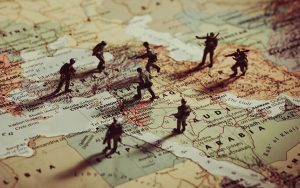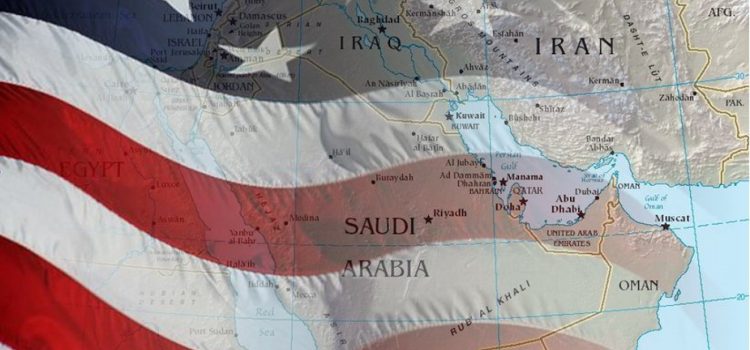
The Middle East has long been a region of significant geopolitical interest due to its strategic location, abundant natural resources, and diverse cultural heritage. However, it is also a region characterized by political instability, conflict, and socio-economic challenges. This article examines the factors contributing to political stability in the Middle East, analyzes current stability trends, and provides a comparative overview of the political landscapes in key countries within the region.
Factors Contributing to Political Stability

The historical context of the Middle East plays a crucial role in understanding its current political dynamics. The legacy of colonialism, the arbitrary drawing of borders, and the establishment of modern nation-states have all contributed to regional instability. The dissolution of the Ottoman Empire after World War I, followed by the influence of European powers, created a mosaic of states with diverse ethnic and religious groups, often leading to internal conflicts.
Ethnic and Religious Diversity
The Middle East is home to a rich tapestry of ethnicities and religions, including Arabs, Persians, Kurds, Turks, and others. Major religious groups include Muslims (both Sunni and Shia), Christians, Jews, and various smaller sects. This diversity can lead to tension and conflict, especially when political power is unevenly distributed among these groups. Sectarianism has been a significant source of instability, particularly in countries like Iraq, Syria, and Lebanon.
Economic Factors
Economic conditions significantly influence political stability. Many Middle Eastern countries are heavily reliant on oil and gas exports, making their economies vulnerable to fluctuations in global energy prices. Economic disparity, high unemployment rates, and inadequate public services contribute to social unrest and dissatisfaction with governments. Countries with more diversified economies, such as the United Arab Emirates and Israel, tend to experience greater stability.
External Influences
Foreign intervention and geopolitical interests have profoundly impacted the Middle East. The involvement of global powers like the United States, Russia, and European nations, as well as regional powers such as Saudi Arabia and Iran, has often exacerbated conflicts. Proxy wars, military interventions, and support for various factions have contributed to ongoing instability in countries like Yemen, Syria, and Libya.
Authoritarianism vs. Democracy
The political systems in the Middle East vary widely, ranging from absolute monarchies and authoritarian regimes to nascent democracies. Authoritarian governments, such as those in Saudi Arabia and Egypt, maintain stability through strict control and suppression of dissent. In contrast, countries like Tunisia, which transitioned to democracy after the Arab Spring, face challenges in consolidating democratic institutions and practices.
Impact of the Arab Spring
The Arab Spring, which began in 2010, was a wave of pro-democracy protests and uprisings that swept across the Middle East and North Africa. While it led to significant political changes in some countries, such as Tunisia and Egypt, it also resulted in prolonged conflicts and civil wars in others, like Syria, Libya, and Yemen. The outcomes of the Arab Spring highlight the complexities of achieving sustainable political reforms in the region.
Regional Conflicts and Civil Wars

Ongoing conflicts and civil wars are major sources of instability. Syria’s civil war, which began in 2011, has resulted in immense human suffering and displacement, while Yemen’s conflict has created one of the world’s worst humanitarian crises. These wars have regional implications, drawing in neighboring countries and external powers, and contributing to broader instability.
Role of International Organizations
International organizations, including the United Nations, have been involved in peacekeeping, humanitarian aid, and conflict resolution efforts in the Middle East. However, their effectiveness is often limited by geopolitical rivalries and the complex nature of regional conflicts. Diplomatic initiatives and peace processes, such as the Iran nuclear deal and the Israeli-Palestinian peace negotiations, demonstrate both the potential and challenges of international involvement in promoting stability.
Comparative Analysis of Political Stability in Key Middle Eastern Countries
Saudi Arabia
Saudi Arabia is a key player in the Middle East with a significant influence on regional politics. The country is an absolute monarchy with a highly centralized government. Political stability is maintained through strict control by the royal family and significant economic resources from oil revenues. However, challenges such as human rights issues, economic diversification, and regional rivalries, particularly with Iran, impact its stability.
Iran
Iran is a theocratic republic with a unique political system combining elements of democracy and religious rule. The country has experienced significant political and social unrest, particularly related to economic challenges and political freedoms. Iran’s involvement in regional conflicts and its rivalry with Saudi Arabia contribute to regional instability. However, its strong national identity and centralized control provide a degree of internal stability.
Israel
Israel is a parliamentary democracy with a diverse society. It faces ongoing security challenges, particularly related to its conflict with the Palestinians and tensions with neighboring countries. Despite these challenges, Israel maintains a stable political system, a robust economy, and strong international alliances, particularly with the United States.
Egypt
Egypt, the most populous Arab country, has experienced significant political upheaval since the Arab Spring. The country transitioned from an authoritarian regime to a brief period of democratic governance, followed by a return to military-backed rule. Economic challenges, political repression, and security concerns, particularly in the Sinai Peninsula, impact its stability. However, its strategic location and historical influence make it a key player in regional politics.
Turkey
Turkey straddles the boundary between the Middle East and Europe, with a unique blend of cultural and political influences. It is a republic with a strong presidential system. Turkey has experienced significant political changes under President Recep Tayyip Erdoğan, including a shift towards more centralized power. Internal challenges such as the Kurdish issue, economic fluctuations, and regional conflicts, particularly in Syria, influence its stability.
Analysis Table: Factors Influencing Political Stability
| Factor | Impact on Stability | Examples from the Middle East |
| Historical Context | Borders and colonial legacy create ethnic and political tensions | Arbitrary borders post-Ottoman Empire; French and British mandates |
| Ethnic and Religious Diversity | Potential for sectarian conflict and uneven power distribution | Sunni-Shia divide in Iraq; ethnic tensions in Syria |
| Economic Conditions | Economic disparity and reliance on oil affect social stability | High unemployment in Egypt; oil dependency in Saudi Arabia |
| External Influences | Foreign interventions exacerbate conflicts | US and Russian involvement in Syria; Saudi-Iran rivalry |
| Political Systems | Authoritarian regimes maintain control, democracies face instability | Absolute monarchy in Saudi Arabia; democratic transition in Tunisia |
| Regional Conflicts | Ongoing wars create humanitarian crises and regional instability | Civil war in Yemen; conflict in Syria |
Comparative Table: Political Stability in Key Middle Eastern Countries
| Country | Political System | Key Stability Factors | Current Challenges |
| Saudi Arabia | Absolute Monarchy | Centralized control, oil revenue | Human rights issues, economic diversification, Iran rivalry |
| Iran | Theocratic Republic | Strong national identity, centralized power | Economic sanctions, social unrest, regional conflicts |
| Israel | Parliamentary Democracy | Robust economy, strong international alliances | Palestinian conflict, security threats |
| Egypt | Military-backed Republic | Strategic location, historical influence | Economic challenges, political repression, Sinai insurgency |
| Turkey | Presidential Republic | Cultural and political blend, centralized power | Kurdish issue, economic fluctuations, Syrian conflict |
Conclusion
Political stability in the Middle East is a multifaceted issue influenced by historical, social, economic, and geopolitical factors. The region’s diverse political systems, ranging from authoritarian regimes to nascent democracies, face unique challenges and opportunities. While some countries maintain stability through centralized control and economic resources, others struggle with ongoing conflicts and socio-economic disparities. International efforts to promote stability are crucial but must navigate the complex dynamics of the region. Understanding these factors is essential for fostering a more stable and prosperous Middle East.










